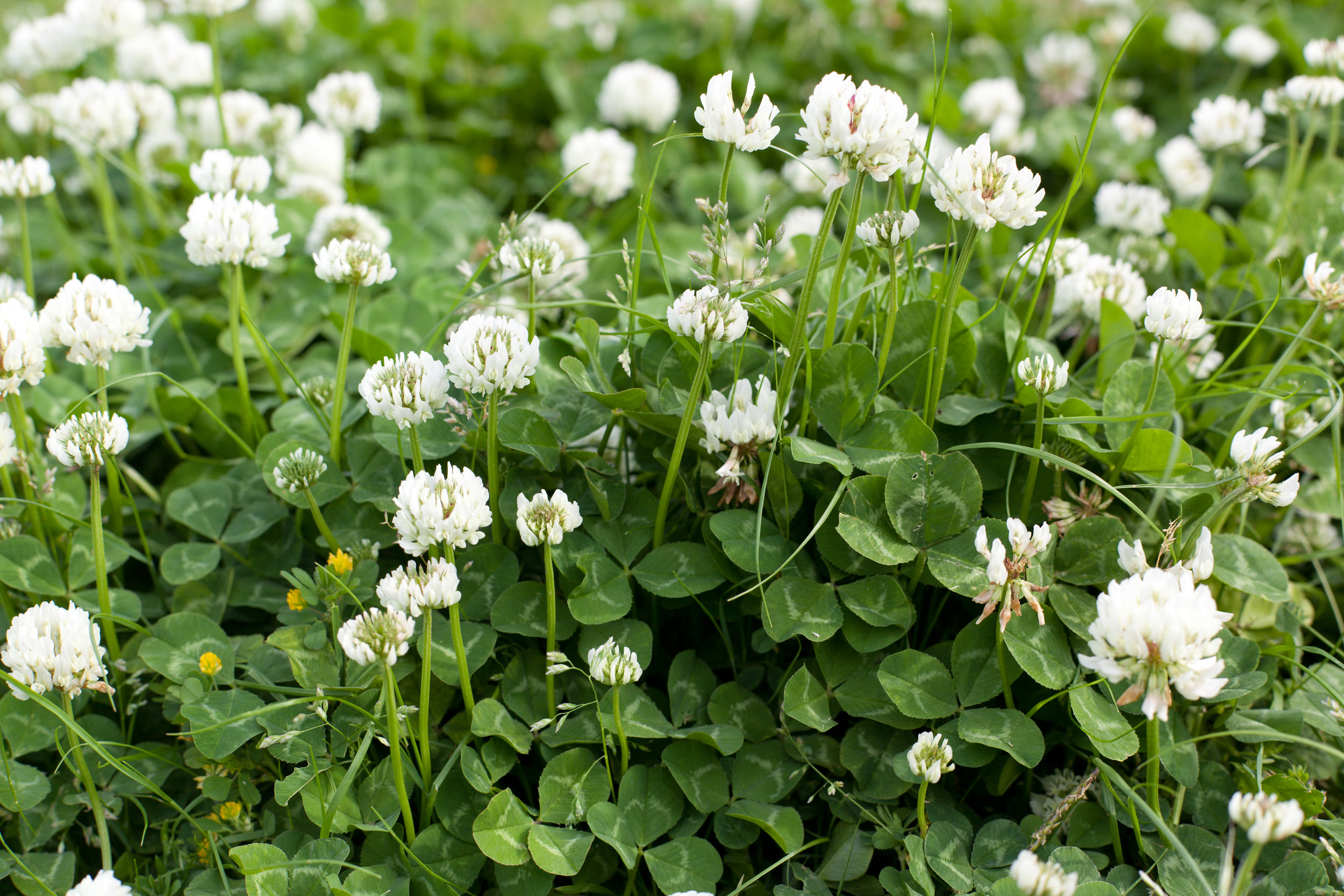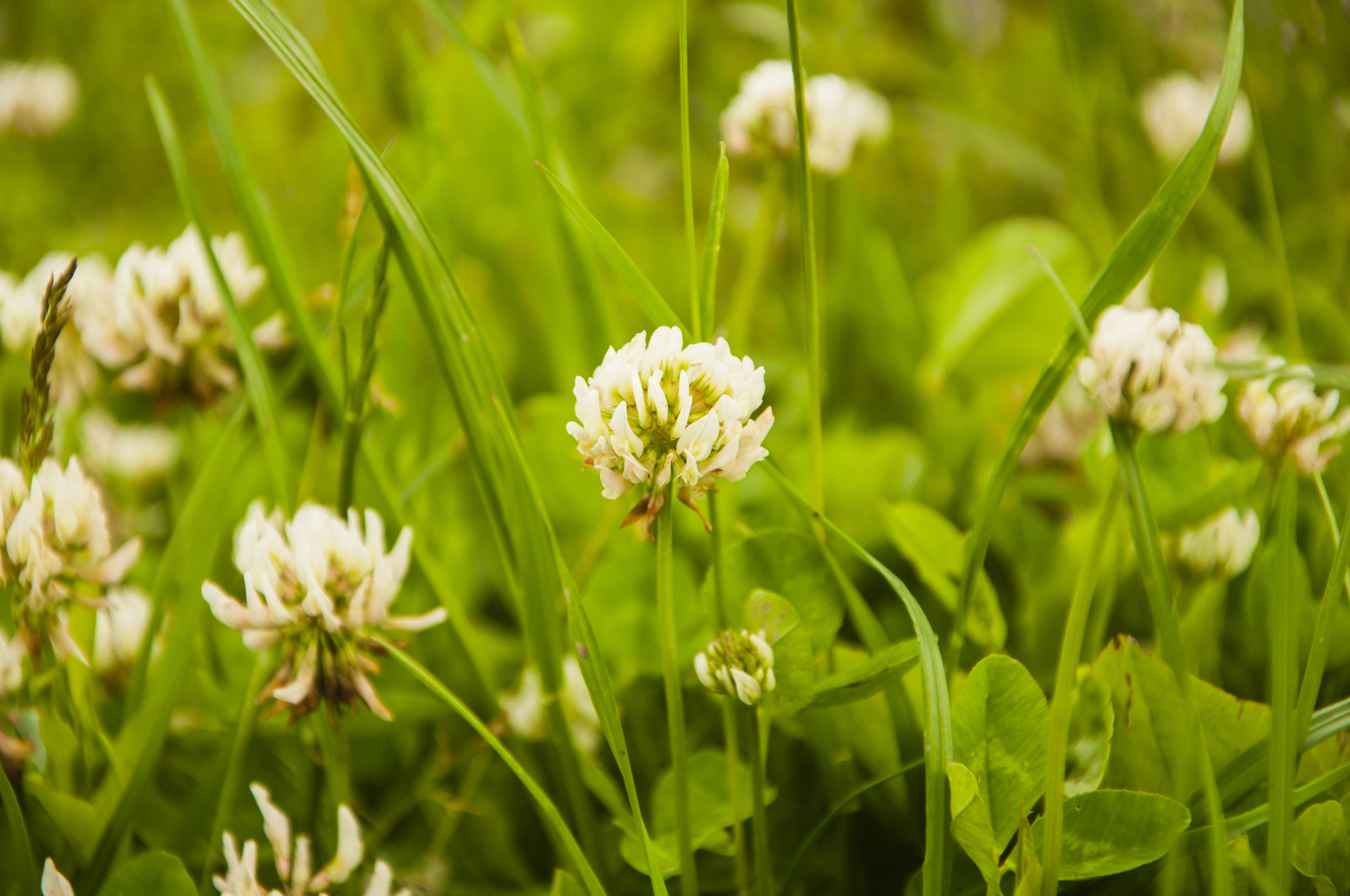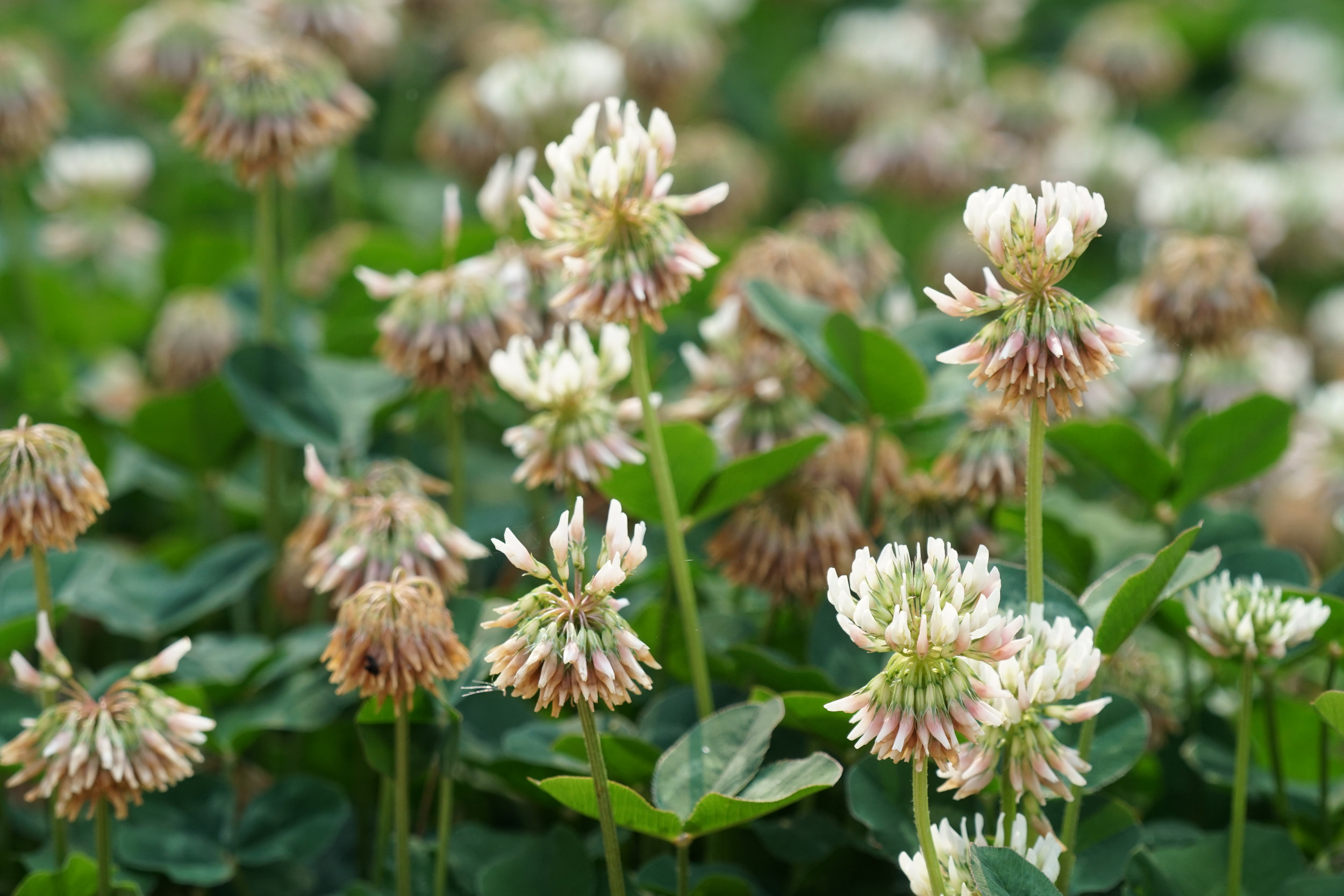Trifolium repens (White clover)
Short, stoloniferous nitrogen-fixing perennial legume with white flowers. Adapted to shallow, moist clay and silt soils or fertile sands with adequate moisture. Difficult to establish and short-lived on dry sites. Slightly acidic to mildly alkaline tolerant. Somewhat winter hardy. Possibly the world’s most widely distributed and commonly used forage legume. Use with grasses in wet or irrigated grazing systems. Highly palatable and nutritious forage for livestock and wildlife. Leaves and seeds are eaten by bears, large herbivores and numerous birds, including sagegrouse, ruffed grouse and sharp-tailed grouse. Pollen and nectar source for honeybees, bumblebees and beneficial insects. Varieties listed below.
DISTRIBUTION / ADAPTATION
INFORMATION & ATTRIBUTES
Family: Fabaceae
Duration: Perennial
Growth Habit: Forb
Native Status: Introduced
Growth Form:
Mature Height: in.
Bloom Color: White, Pink
Bloom Period:
Annual Precipitation: in.
Drought Tolerance:
Shade Tolerance:
Fire Resistance:
Fire Tolerance:
Nitrogen fixation:
Bloat:
SOIL ADAPTATION
Coarse Texture:
Medium Texture:
Fine Texture:
Salinity Tolerance:
CaCO3 Tolerance:
pH Range:
SEEDING NOTES
Seeds per Pound:
Seeding Rate: lbs/acre
Season:
Days to Germination:
VARIETIES
Ladino - Large-type, distinguished by its large growth form, thicker stems and stolons, and fewer flowers and seeds. Use in pastures with grasses, or tall enough to harvest for hay, silage and green chop. Produces more tonnage than other types.
White Dutch - Medium-type, distinguished by its low growth form, aggressive tillering, and numerous flowers. Good for grazing and high traffic areas. Also used in lawns to aid in fertilization.





